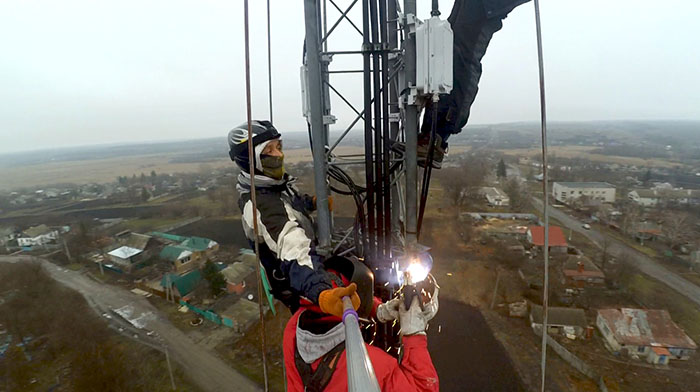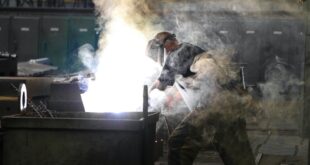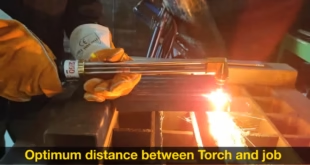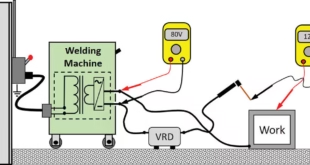Welding Work at Height: An In-Depth Guide
Introduction
Welding at height is a specialized and complex task that requires thorough preparation, skill, and adherence to safety protocols. This comprehensive guide delves into the various aspects of welding at elevated locations, covering the preparation, execution, equipment, safety measures, challenges, regulatory compliance, and economic aspects.
1. Preparation and Execution
Access Preparation:
- Support Systems: The setup begins with establishing secure support systems such as scaffolding, aerial lifts, or rope access techniques. Each method has its advantages depending on the height, accessibility, and nature of the work.
- Site Inspection: A thorough inspection of the site is essential to identify potential hazards such as loose structures, electrical lines, or unstable surfaces.
- Safety Planning: Developing a detailed safety plan that includes emergency procedures, communication protocols, and fall protection measures.

Welding Procedure:
- Equipment Transportation: Transporting welding equipment and materials to the elevated worksite. This often requires the use of cranes, hoists, or manual carrying depending on the height and accessibility.
- Setup and Calibration: Setting up and calibrating welding equipment such as power sources, wire feeders, and gas cylinders.
- Welding Process: Performing the welding operation involves precise positioning and securing of the metal components. This requires steady hands, excellent coordination, and often working in awkward positions to reach the weld joints.
2. Safety Measures
Safety is a critical aspect of welding at height due to the increased risk of falls, burns, and equipment-related accidents. Key safety measures include:
- Personal Protective Equipment (PPE): Welders must wear appropriate PPE, including flame-resistant clothing, welding helmets with proper filtration, gloves, safety harnesses, and boots.
- Fall Protection: Utilizing fall arrest systems, guardrails, and safety nets to prevent falls. Regular inspection and maintenance of these systems are crucial.
- Fire Safety: Ensuring that the work area is free from flammable materials. Using fire blankets, extinguishers, and having a fire watch present during the welding process.
- Environmental Considerations: Monitoring weather conditions and halting work during adverse weather such as high winds, rain, or lightning.
3. Equipment and Techniques
Various equipment and techniques are used in welding at height to ensure efficiency and safety:
- Rope Access: This technique involves using ropes and harnesses to position welders. It is ideal for hard-to-reach areas and minimizes the need for extensive scaffolding.
- Scaffolding: Provides a stable and secure platform for welders. Scaffolding must be properly erected, inspected, and maintained.
- Aerial Lifts: Machines like cherry pickers and scissor lifts are used to reach high areas. These provide mobility and stability but require skilled operators and regular maintenance.
- Welding Methods: Different welding methods, such as MIG (Metal Inert Gas), TIG (Tungsten Inert Gas), and Stick welding, are chosen based on the material and conditions. Each method has its specific equipment, techniques, and safety considerations.
4. Challenges and Risks
Welding at height presents several unique challenges and risks:
- Environmental Factors: Weather conditions can significantly impact safety and the quality of welds. Wind can blow away shielding gas, rain can cause electrical hazards, and extreme temperatures can affect material properties.
- Physical Strain: Welders often work in awkward positions, which can lead to physical strain and fatigue. Prolonged exposure to these conditions can result in musculoskeletal injuries.
- Fire and Explosion Risks: The presence of flammable materials and gases increases the risk of fires and explosions. Proper ventilation, fire-resistant materials, and strict adherence to safety protocols are essential.
5. Mitigation Strategies
Effective strategies to mitigate the risks associated with welding at height include:
- Training and Certification: Regular training and certification for welders to ensure they are skilled in working at heights and using the necessary safety equipment.
- Fire-Resistant Materials: Using fire-resistant coatings and materials to minimize the risk of ignition.
- Safety Protocols: Implementing strict safety protocols, including regular safety drills, inspections, and maintenance of equipment.
6. Regulatory Compliance
Adhering to regulatory standards is crucial for ensuring the safety and legality of welding work at height:
- OSHA Standards: In the United States, OSHA provides guidelines for fall protection, scaffold use, and welding safety. Compliance with these standards is mandatory.
- International Standards: Different countries have their own regulations and standards. It is essential to be familiar with and adhere to these local requirements.
- Certification Requirements: Ensuring that welders are certified according to industry standards, such as AWS (American Welding Society) or equivalent certifications in other countries.
7. Economic Aspects
The cost of welding at height can vary significantly based on several factors:
- Accessibility: Hard-to-reach areas may require specialized equipment and additional safety measures, increasing the overall cost.
- Safety Measures: Comprehensive safety plans and equipment can be costly but are essential for minimizing risks.
- Project Complexity: The complexity and duration of the project also influence the cost. More complex projects require more skilled labor and advanced equipment.
Conclusion
Welding work at height is an essential task in various industries, requiring a combination of skill, preparation, and adherence to safety protocols. By understanding the challenges, risks, and necessary precautions, welders can perform these tasks safely and efficiently. The economic and regulatory aspects also play a significant role in ensuring the success and legality of these operations. Proper training, equipment, and compliance with standards are crucial for maintaining safety and quality in welding work at height.
 Welding of Welders All about Welding and Welders
Welding of Welders All about Welding and Welders



